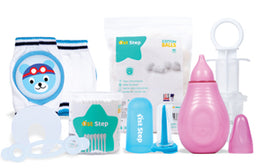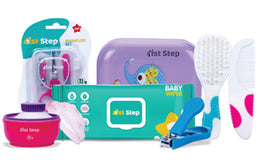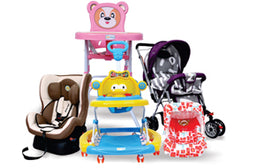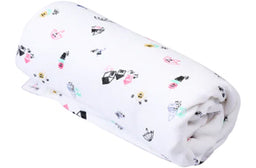Summer Foods For Children To Escape Heat Stroke
Summer is here, and we all know what that means – scorching heat and sweaty afternoons. As adults, we can handle the heat, but when it comes to our little ones, we want to ensure they stay cool, refreshed, and safe from the dreaded heat stroke.
As parents, we understand the challenges of finding the right foods that provide essential nutrients and help combat the sweltering heat.
In this blog, we will explore a variety of delicious and refreshing foods that are not only tasty but also keep your children hydrated and safeguarded from heat-related illnesses.
From juicy fruits to chilled treats, your kids will love these yummy summer foods!
Signs Of Heat Stroke In A Child
During hot summer months, heat stroke is a serious condition that can affect anyone, including children. Recognising the signs of heat stroke in a child is crucial for their well-being.
- The first and most prominent sign is a high body temperature, which frequently exceeds 103°F (39.4°C). Children suffering from heat stroke may have flushed skin that is hot to the touch.
- Quick breathing and a rapid heartbeat are some common symptoms that indicate the body's fight to cool down.
- Dizziness, headache, nausea, and vomiting are some of the other symptoms.
- Changes in behaviour, such as confusion, impatience, and fatigue, are also other indicators.
Heat stroke can quickly progress and become life-threatening, so immediate action is crucial.
Also, Read a blog on "7 Tips To Take Care Of Your Baby During Summer"
Summer Foods For Children to Escape Heat Stroke
These foods are some of the best options to give your child during the summer:
1. Cucumber

Cucumber is another great option because it is high in water and has a nice crunch. It helps in the regulation of body temperature and keeps children hydrated.
2. Watermelon

Watermelon is a hydrating fruit with high water content that helps kids stay cool and hydrated. It also contains electrolytes, which replace minerals lost via sweating.
3. Yoghurt

Yoghurt is high in calcium and has a cooling impact on the body. It can be eaten as a snack or combined with other ingredients to produce smoothies or frozen yoghurt delights.
4. Coconut Water

Coconut water is a natural electrolyte-rich beverage that helps in the restoration of fluids and minerals lost through sweating. It's a great substitute for sugary sports drinks.
5. Citrus Fruits

Oranges, lemons, and other citrus fruits are high in vitamin C and excellent sources of hydration. They also provide a flavorful burst and can be consumed as juices or fruit popsicles.
6. Mint

Mint leaves are cooling and can be added to water, lemonades, or ice cubes for a refreshing twist.
7. Leafy Greens

Leafy greens, such as spinach and kale, have a high water content and are high in important nutrients. They can be used in salads, smoothies, and even as a filling for wraps.
8. Tomatoes

Tomatoes are high in antioxidants such as lycopene and are hydrating. They can be sliced and added to salads, sandwiches, or refreshing gazpacho soups.
9. Berries

Strawberries, blueberries, and raspberries are abundant in antioxidants and delicious. They can be eaten on their own, mixed with yoghurt, or frozen into fruity popsicles.
10. Homemade Ice Pops

Prepare healthy homemade ice pops using fresh fruit juices, yoghurt, or blended fruits. These provide a cooling treat while also being nutritious.
By including these summer foods in their diet, children can stay cool, hydrated, and reduce the risk of heat stroke during the hot summer months. Remember to encourage them to drink plenty of water throughout the day as well.
Also, Read this blog on "8 Awesome Bath and Body Essentials to Have This Summer for New moms"
Common Summer Ailments in Kids & How to Prevent Them
Here are some of the most common summer ailments in kids you need to keep an eye on:
#1. Sunburn
- Apply sunscreen on your kid before heading out.
- Ask them to wear lightweight garments and headwear to protect exposed skin.
- Don't let your kids outside during peak sun hours (12 p.m. to 4 p.m.).
#2. Dehydration
- Encourage kids to drink plenty of water during the day.
- Hydrating food such as melons, cucumbers, and oranges should be given.
- Limit your kid's intake of sugary and caffeinated beverages.
#3. Heat Exhaustion/Stroke
- Children should be kept in cool, well-ventilated areas.
- Dress them in light, loose-fitting clothing.
- Ask them to take frequent breaks and stay in the shade for most of the day.
#4. Food Poisoning
- Practice proper food hygiene, such as washing hands and utensils.
- Keep perishable foods refrigerated or in a cooler during outings.
- Avoid leaving food uncovered for long periods in hot temperatures.
#5. Swimmer’s Ear
- After swimming or bathing, carefully dry your kid's ears.
- Avoid placing things into the ears, which can cause ear canal injury.
- As a preventative step, use swimmer's ear drops.
#6. Heat Rash
- Dress children in lightweight, breathable clothing.
- Keep them in a cool and well-ventilated environment.
- Use talc-free powders to keep their skin dry and prevent friction.
#7. Waterborne Diseases
- Ensure your children do not swim in or consume contaminated water sources.
- Teach kids how to wash their hands, especially before meals properly.
- Be cautious of potential hazards when visiting public pools, lakes, or water parks.
#8. Urinary Tract Infections (UTI)
- Encourage kids to drink plenty of water to help them flush out bacteria.
- Remind kids to empty their bladders on a regular basis, particularly after swimming.
- Prolonged contact with wet swimsuits or diapers might also encourage bacterial growth.
Parents can help their children stay healthy and enjoy a fun-filled summer season without succumbing to common ailments by being proactive and taking preventive measures.
Get A-Z Baby Products At 1st Step!
As discussed above, providing your kids with the right foods in summer is important to ensure their well-being. Along with the food, you should also be careful about the kind of utensils, products and cutlery you use.
At 1st Step, we offer you a wide range of safe and mom-friendly feeding and nursing products like feeder bottles, spoons, food nibblers, sipper cups, and more! Our products are specially designed to make both babies and parents the best care and comfort.
Conclusion
Summer can be an exciting and adventurous time for children, but it's important to prioritise their health and safety, especially when it comes to preventing heat stroke.
By incorporating the right foods into their diet, we can help children stay cool and hydrated during the scorching months.
Additionally, encouraging children to drink plenty of water and avoid sugary drinks will further support their well-being. We can ensure our children have a happy and healthy summer by being mindful of their nutrition and providing nourishing summer foods.
Frequently Asked Questions(FAQs)
1. How can I help my child recover from heat exhaustion?
Help your kid heal from heat exhaustion by shifting them to a cool location, allowing them to relax and drink plenty of fluids, applying cool compresses, and regularly monitoring their status.
2. How long does heat stroke last in kids?
Heat stroke in kids can last anywhere from a few hours to a few days. It is critical to seek early medical attention as the condition necessitates prompt treatment.
3. What can you give a child for heat stroke?
If a kid suffers from heat stroke, immediately get emergency medical attention! Unless otherwise directed by a healthcare professional, do not administer anything orally. Immediate medical intervention is necessary for proper treatment.
 Feeding & Nursing
Feeding & Nursing Safety & Grooming
Safety & Grooming  Bathing & Diapering
Bathing & Diapering Baby Gear
Baby Gear Mother Needs
Mother Needs Muslin Essentials
Muslin Essentials Baby Toys
Baby Toys












